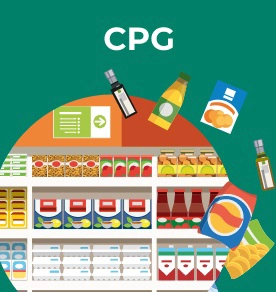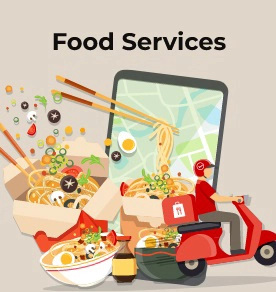Brewing a Culture: Sushant Dash, CEO, Starbucks India Reveals the Brand’s Ambitious Blueprint for Conquering Bharat

Tata Starbucks isn’t just pouring coffee — it’s brewing connections, culture, and innovation. With over 476 stores across 76 Indian cities, the brand has become a lifestyle symbol, blending global standards with desi flavors.
By Aritra Ghosh, Senior Features Writer
Apr 07, 2025 / 37 MIN READ
When Tata Starbucks first set foot in India in 2012, it wasn’t just here to sell coffee. It came armed with ambition — to rewrite India’s beverage story, one cappuccino at a time. A decade later, the brand has not only survived but thrived, becoming an urban icon and setting the gold standard for premium coffee experiences.
Today, with 476 stores across 76 cities, Starbucks isn’t just a pit stop for caffeine—it’s a cultural statement. But what keeps the cups flowing and the doors swinging? Sushant Dash, CEO of Tata Starbucks since 2021, believes the secret sauce lies in a potent mix of innovation, personalization, and community building. Dash has been pivotal in shaping the brand's Indian narrative, having been one of the initial Tata employees involved in Starbucks’ entry into the country. With a career spanning years at Tata Consumer Products—the makers of Tata Tea, Tata Salt, and Tetley beverages—Dash brought a wealth of expertise to the coffee giant's Indian operations.
"Starbucks is not just about coffee; it’s about warmth, connection, and community," Dash states confidently.
A joint venture with Tata Consumer Products Limited gave birth to Tata Starbucks Private Limited, and today, over a decade later, Starbucks has steadily expanded its footprint from metros like Mumbai and Delhi to Tier II towns like Raipur and Bhubaneswar, weaving a story of warmth, connection, and community.
Crafting a Third-Place Experience
"Starbucks is not just about coffee," says Sushant Dash. "People come for the coffee, but they stay back for the connection, for the warmth. It’s about the third-place experience."
This philosophy forms the foundation of Starbucks’ success worldwide and resonates deeply in India. At its core, the brand delivers not just premium-quality coffee but also a consistent experience. From sourcing the top 3 percent of Arabica coffee beans to sustainable farming and impeccable brewing, Starbucks ensures that every cup tastes just right—whether sipped in Mumbai or Manhattan.
However, the magic doesn’t stop at coffee. The baristas, fondly called 'partners,' add a personal touch, creating an inviting atmosphere that feels like a ‘home away from home.’ Dash emphasizes that this cultural shift is gradual in India, where tea dominates at a staggering 91–92 percent penetration compared to coffee’s modest 16 percent. Yet, the potential for growth remains massive.
Starbucks positions itself not merely as a coffee provider but as an enabler of conversations, collaborations, and connections. It’s a space for work, leisure, and creativity, where people can relax, celebrate, or brainstorm ideas over a cup of perfectly brewed coffee. The cultural impact of Starbucks’ ‘third-place’ concept has been transformative, encouraging consumers to view coffee shops as more than just beverage outlets—they are social spaces.
"Coffee may bring you to Starbucks, but it’s the warmth and connection that keep you coming back," adds Dash.
From 470 Stores to 1,000 by 2028
In the past three years, Tata Starbucks has more than doubled its presence—from 200 stores in 20 cities to 476 outlets in 76 cities today. The pace of expansion has been impressive, with stores sprouting in smaller towns like Jamshedpur, Patna, and Ranchi.
"We’ve set ourselves an ambitious target of 1,000 stores by 2028," shares Dash. "My team might not be too happy about it, but we have already put it out in the media, so we’ll try and make it happen."
While global markets focus heavily on B2B partnerships, India’s strategy remains B2C-centric for now. Establishing the Starbucks experience and building coffee habits are top priorities before venturing into the B2B space.
India’s journey mirrors the transformation witnessed in China, where Starbucks helped convert a tea-drinking nation into the company’s second-largest market with 7,000 stores. Dash draws inspiration from China’s success:
"China showed us that building habits requires cultural integration. From festive specials to simplified menus, we’re lowering barriers for Indian consumers."
India’s evolving urban landscape and growing millennial and Gen Z populations provide a fertile ground for Starbucks’ growth strategy. The brand’s focus on Tier II and Tier III cities underlines its belief in India’s untapped potential. "We are not just looking at urban India; we are looking at Bharat," Dash points out, highlighting the duality of markets and the need for nuanced strategies.
Innovating for India
Understanding India’s diverse palate, Starbucks has adopted a hyper-local approach, balancing global favorites with regional flavors. Menu innovations include items like the Malabari Egg Roast Turnover in Kochi, the Kosha Mangsho Roll in Kolkata, and the Thecha Swirl in Mumbai.
"You need to do both—bring global favorites and introduce hyper-local offerings," explains Dash. "This creates brand empathy and builds love for Starbucks while respecting India’s culinary preferences."
The brand has also experimented with store formats to cater to varied consumer segments. From its first Reserve store in Mumbai’s Horniman Circle to drive-thrus, metro station outlets, and even a pet-friendly café in Jaipur, Tata Starbucks has left no stone unturned. Dash highlights experiential stores like Punjabi Bagh in Delhi and Dhanraj Mahal in Mumbai that showcase handcrafted coffee options alongside Indian-inspired beverages like Malabar Latte and Sikanji Cold Brew.
Dash believes, that in order to create a coffee culture in India, they have to speak the language of the Indian palate, as coffee cannot be sold in isolation but needs to be paired with flavors people know and love.
Starbucks has blended international styles with Indian sensibilities not only through its menu but also in its store designs. Regional elements, traditional motifs, and warm lighting make each store visually unique while retaining Starbucks’ signature elegance. "We want our stores to feel familiar yet aspirational," says Dash.
Spaces That Adapt to Needs
Innovation extends to store formats as well. Tata Starbucks has adapted to evolving customer needs by introducing:
- Pet-Friendly Stores like the one in Jaipur, catering to urban pet lovers.
- Drive-Thru Outlets for convenience on the go.
- Metro Station Stores for commuters needing quick refuels.
- Reserve Stores focused on specialty coffee experiences, such as the one at Horniman Circle, Mumbai.
"India is diverse, and so are its needs. We’re innovating formats to suit every lifestyle," explains Dash.
In a country with fast-paced urbanization, Tata Starbucks has also focused on accessibility. By opening stores in smaller towns such as Patna, Jamshedpur, and Ranchi, it aims to bring the Starbucks experience to emerging markets. Dash believes that reaching these areas creates aspirational value for the brand while making premium coffee more approachable.
Starbucks recently introduced its experiential stores in Delhi and Mumbai. These new format stores are very India-specific. “The reserve stores are coffee-forward, one can choose from 13 espresso beans, while also bringing out the Indian flavors and Indian craftsmanship to the fore,”
Thus, Starbucks’ idea is to look at what is relevant to the Indian consumer and marry that with what the brand globally stands for.
Celebrating Culture through Collaborations
Starbucks isn’t just serving coffee; it’s creating cultural moments. The brand has collaborated with fashion designers like Sabyasachi and Manish Malhotra, launching limited-edition merchandise that sold out in days. Global tie-ups with Disney and movie-themed collections have also captivated younger audiences.
"We are building a brand people can empathize with and love," says Dash. "Whether it’s festive specials like our Diwali range or collaborations with designers, the idea is to keep evolving while staying relevant to our audience."
These collaborations reflect Starbucks’ ability to stay attuned to cultural trends, reinforcing its position as a lifestyle brand. Dash shares insights on their merchandise strategies, noting the influence of global fashion trends and the need to balance exclusivity with accessibility. "A collaboration has to feel special," he says. "We create excitement, and that drives demand."
Sustainability and Community Building
Starbucks’ commitment to sustainability is another pillar of its growth. From sourcing 100 percent ethical Arabica beans to reducing carbon footprints and promoting reusables, sustainability underpins Tata Starbucks’ operations.
Community engagement programs, including youth training initiatives and collaborations with local artisans, reflect the brand’s focus on impact-driven growth.
"We’re not just selling coffee; we’re building communities," Dash emphasizes.
Bringing Warmth to the Fourth Place
As Starbucks extends its presence online, the challenge is replicating the warmth of its physical stores. The brand’s app uses AI and machine learning to personalize experiences—suggesting drinks based on weather patterns or past preferences.
"We’re trying to make digital interactions feel like walking into a Starbucks store," Dash explains. "Our app addresses you by name and suggests your usual drink. It’s a work in progress, but we’re committed to enhancing that connection."
With over 3.5 million loyalty members and 13–14 percent of business coming from deliveries, Starbucks is embracing digital channels while exploring innovations like Swiggy Bold for 10-minute deliveries. However, Dash acknowledges that takeaway culture in India still has room to grow.
Additionally, loyalty programs such as Starbucks Rewards incentivize repeat visits, offering exclusive perks and discounts to members. Dash believes digitalization has not just enhanced convenience but also helped Starbucks deepen its relationship with its customer base.
Brewing Aspirations
As Tata Starbucks charts its journey toward 1,000 stores by 2028, its roadmap includes continued innovation, deeper regional integration, and stronger digital engagement. From evolving store formats to building emotional connections, the brand remains steadfast in its mission to make coffee a daily habit for Indians.
With increasing urbanization, growing disposable incomes, and a digitally connected youth, Tata Starbucks is well-positioned to lead India’s coffee revolution.
"We’ve only scratched the surface," concludes Dash. "The potential is enormous, and we’re here for the long brew."
Since 1971, Starbucks Coffee Company has been committed to ethically sourcing and roasting high-quality arabica coffee. Today, with more than 38,000 stores worldwide, the company is the premier roaster and retailer of specialty coffee in the world.
When Tata Starbucks first set foot in India in 2012, it wasn’t just here to sell coffee. It came armed with ambition — to rewrite India’s beverage story, one cappuccino at a time. A decade later, the brand has not only survived but thrived, becoming an urban icon and setting the gold standard for premium coffee experiences.
Today, with 476 stores across 76 cities, Starbucks isn’t just a pit stop for caffeine—it’s a cultural statement. But what keeps the cups flowing and the doors swinging? Sushant Dash, CEO of Tata Starbucks since 2021, believes the secret sauce lies in a potent mix of innovation, personalization, and community building. Dash has been pivotal in shaping the brand's Indian narrative, having been one of the initial Tata employees involved in Starbucks’ entry into the country. With a career spanning years at Tata Consumer Products—the makers of Tata Tea, Tata Salt, and Tetley beverages—Dash brought a wealth of expertise to the coffee giant's Indian operations.




